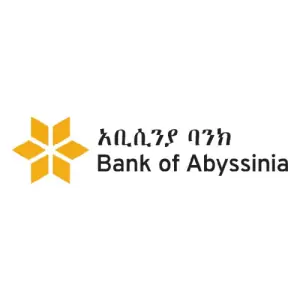The National Bank of Ethiopia (NBE) has initiated significant reforms to enhance the country’s banking regulations, aiming to support financial stability and align with international standards. This move involves revising five key directives related to risk management, governance, and financial reporting, as guided by global best practices outlined by organizations such as the Basel Committee on Banking Supervision.
According to the National Bank of Ethiopia FSR (Financial Stability Report) April 2024, the top ten borrowers in the banking industry collectively held about 23.5% of all loans and advances by June 2023. This percentage went up from 18.7% the previous year, showing an increasing concentration among these major borrowers. These borrowers owe 440 billion ETB to private and government banks. Read More…
“It is critical for public savings to be mobilized, protected, and deployed safely for the purposes of economy-wide lending, investment, and growth,” NBE said.
The first directive limits a bank’s total lending to any single borrower or group of connected parties to a maximum of 25% of its capital. This tighter restriction is intended to prevent a default by a major borrower from destabilizing an individual bank or the entire banking system.
The second directive focuses on related-party lending. It sets a 15% capital limit on loans to any single related borrower, such as a director, and an overall cap of 35% for lending to all related parties combined.
Previously, there were no explicit numerical limits on this type of lending, which created opportunities for abuse.
The new directive requires all non-performing loans to be immediately placed on non-accrual status, regardless of collateral and aligns with global standards. Additionally, loans are now classified as non-performing more quickly if borrowers miss payments. This change forces banks to set aside larger reserves against potential losses upfront, rather than delaying through restructures.
The directive also introduces stricter limits on loan restructures. Banks are now limited to three short-term restructures and four long-term restructures before declaring a default, down from five and six previously.
The NBE’s Financial Stability Report highlighted the uneven distribution of credit in the country. While a small group of borrowers dominates the lending landscape, the report revealed that 99.8% of loans are concentrated in urban areas, leaving many rural residents underserved. The report also identified significant risks in terms of loan diversification, as indicated by key financial metrics.
These governance reforms, along with the new lending limits and asset classification requirements, aim to create a more stable, equitable, and transparent banking system in Ethiopia. By addressing risk concentration, improving oversight, and promoting financial inclusion, the NBE hopes to support the country’s economic growth and development goals.
Other Stories
Ethiopia Revamps Tax System with New Levies and VAT Expansion













I am sorry, that has interfered… This situation is familiar To me. Let’s discuss. Write here or in PM.
My Views on News
Impartial and Unflinching
Ethiopia: Government Considers Increase in Electricity Tariff
Ethiopia: Government Considers Increase in Electricity Tariff
Gold Price in Ethiopia
Gold Price in Ethiopia
National Bank of Ethiopia NBE Exchange Rates
National Bank of Ethiopia NBE Exchange Rates
Commercial Bank of Ethiopia CBE Exchange Rates
Commercial Bank of Ethiopia CBE Exchange Rates
Ethiopia Suspends the Sale of Ethio Telecom to Foreigners
Ethiopia Suspends the Sale of Ethio Telecom to Foreigners
Ethiopia: Government Considers Increase in Electricity Tariff
Ethiopia: Government Considers Increase in Electricity Tariff
Gold Price in Ethiopia
Gold Price in Ethiopia
National Bank of Ethiopia NBE Exchange Rates
National Bank of Ethiopia NBE Exchange Rates
Commercial Bank of Ethiopia CBE Exchange Rates
Commercial Bank of Ethiopia CBE Exchange Rates
Ethiopia Suspends the Sale of Ethio Telecom to Foreigners
Ethiopia Suspends the Sale of Ethio Telecom to Foreigners
HomeEthiopiaEthiopia Cracks Down on Concentrated Lending with New Banking Rules
National bank of Ethiopia
Ethiopia Cracks Down on Concentrated Lending with New Banking Rules
Sajid Nadeem June 13, 2024 2 min read
Spread the love
The National Bank of Ethiopia (NBE) has initiated significant reforms to enhance the country’s banking regulations, aiming to support financial stability and align with international standards. This move involves revising five key directives related to risk management, governance, and financial reporting, as guided by global best practices outlined by organizations such as the Basel Committee on Banking Supervision.
According to the National Bank of Ethiopia FSR (Financial Stability Report) April 2024, the top ten borrowers in the banking industry collectively held about 23.5% of all loans and advances by June 2023. This percentage went up from 18.7% the previous year, showing an increasing concentration among these major borrowers. These borrowers owe 440 billion ETB to private and government banks. Read More…
“It is critical for public savings to be mobilized, protected, and deployed safely for the purposes of economy-wide lending, investment, and growth,” NBE said.
The first directive limits a bank’s total lending to any single borrower or group of connected parties to a maximum of 25% of its capital. This tighter restriction is intended to prevent a default by a major borrower from destabilizing an individual bank or the entire banking system.
The second directive focuses on related-party lending. It sets a 15% capital limit on loans to any single related borrower, such as a director, and an overall cap of 35% for lending to all related parties combined.
Previously, there were no explicit numerical limits on this type of lending, which created opportunities for abuse.
The new directive requires all non-performing loans to be immediately placed on non-accrual status, regardless of collateral and aligns with global standards. Additionally, loans are now classified as non-performing more quickly if borrowers miss payments. This change forces banks to set aside larger reserves against potential losses upfront, rather than delaying through restructures.
The directive also introduces stricter limits on loan restructures. Banks are now limited to three short-term restructures and four long-term restructures before declaring a default, down from five and six previously.
The NBE’s Financial Stability Report highlighted the uneven distribution of credit in the country. While a small group of borrowers dominates the lending landscape, the report revealed that 99.8% of loans are concentrated in urban areas, leaving many rural residents underserved. The report also identified significant risks in terms of loan diversification, as indicated by key financial metrics.
These governance reforms, along with the new lending limits and asset classification requirements, aim to create a more stable, equitable, and transparent banking system in Ethiopia. By addressing risk concentration, improving oversight, and promoting financial inclusion, the NBE hopes to support the country’s economic growth and development goals.
Other Stories
Ethiopia Revamps Tax System with New Levies and VAT Expansion
Previous
Ethiopia Revamps Tax System with New Levies and VAT Expansion
Next
Ethiopia to Introduce New Law for Fuel Market
0 thoughts on “Ethiopia Cracks Down on Concentrated Lending with New Banking Rules”
Alemayehu Neme says:
June 14, 2024 at 12:18 pm
Your comment is awaiting moderation.
Instead of depending on rich businessmen or businesswomen balanced means on decision for loan and set loan size based on the proposal for beginners in business is vital. Loan repayment schedule, the nature of business , help farmers for transformation of Ethiopian agriculture. I also advice banks to open their minds for clean and green environment as business. Everyone who run a business must pay government tax . Get out of the collateral instead consult business owners to do their business prooerly and pay back theur loan as per the repayment schedhule agreed.
Reply
Leave a Reply
Your email address will not be published. Required fields are marked *
Comment *
Name *
Alemayehu Neme
Email *
[email protected]
Website
http://—
Save my name, email, and website in this browser for the next time I comment.
MORE STORIES
Ethiopia electricity tariff2 min read
Ethiopia: Government Considers Increase in Electricity Tariff
June 14, 2024 Sajid Nadeem
gold prices in ethiopia1 min read
Gold Price in Ethiopia
June 14, 2024 Sajid Nadeem 8
National Bank of Ethiopia NBE1 min read
National Bank of Ethiopia NBE Exchange Rates
June 14, 2024 Sajid Nadeem 12
IMPORTANT
New Fuel Price in Ethiopia
Today’s CBE Exchange Rates
Today’s NBE Exchange Rates
Gold Price in Ethiopia
Swift Codes of All Banks
Commercial Bank of Ethiopia Mobile Banking
RECENT POSTS
Ethiopia: Government Considers Increase in Electricity Tariff
Gold Price in Ethiopia
National Bank of Ethiopia NBE Exchange Rates
Commercial Bank of Ethiopia CBE Exchange Rates
Ethiopia Suspends the Sale of Ethio Telecom to Foreigners
Coffee Production Rises in Welayta Zone, Despite Market Challenges
Ethiopia to Introduce New Law for Fuel Market
Ethiopia Cracks Down on Concentrated Lending with New Banking Rules
YOU MAY HAVE MISSED
Ethiopia electricity tariff2 min read
Ethiopia: Government Considers Increase in Electricity Tariff
June 14, 2024 Sajid Nadeem
gold prices in ethiopia1 min read
Gold Price in Ethiopia
June 14, 2024 Sajid Nadeem 8
National Bank of Ethiopia NBE1 min read
National Bank of Ethiopia NBE Exchange Rates
June 14, 2024 Sajid Nadeem 12
CBE Ethiopian Commercial Bank1 min read
Commercial Bank of Ethiopia CBE Exchange Rates
June 14, 2024 Sajid Nadeem 49
Disclaimer Terms and Conditions Privacy Policy Contact Us
© My Views on News | Newsever by AF themes.
Instead of depending on Rich businessmen or businesswomen the needs to be balncex and set lon size bassd on the proposal for beginners in business. Loan repayment schedule, the nature if business , help farmers for transformation of Ethiopian agriculture. I also advice bank to open thir munds for clean and gredn environment as business. Everyone who run a business must pay government tax . Get out of the collateral instead consult business owner to do their business prooerly and pay back theur lian as per the repayment schedhule.